Bitcoin
5 US Economy Data Points That Could Move BTC Price This Week

As Bitcoin (BTC) hovers near critical price levels, crypto investors focus on a packed week of US economic data releases that could sway market sentiment.
From employment figures to Federal Reserve Chair Jerome Powell’s insights, these macroeconomic indicators are poised to influence Bitcoin’s trajectory.
US Macroeconomic Data To Watch This Week
Crypto market participants, traders, and investors have several US economic events to watch this week. This follows a notable sentiment shift during the weekend, driven by US President Donald Trump’s move to commission a crypto reserve.
The crypto market’s reaction to the president’s executive order reflects Bitcoin’s growing place in the United States macroeconomic space. Here is a breakdown of the five key data points to watch and their potential impact on the world’s leading cryptocurrency.
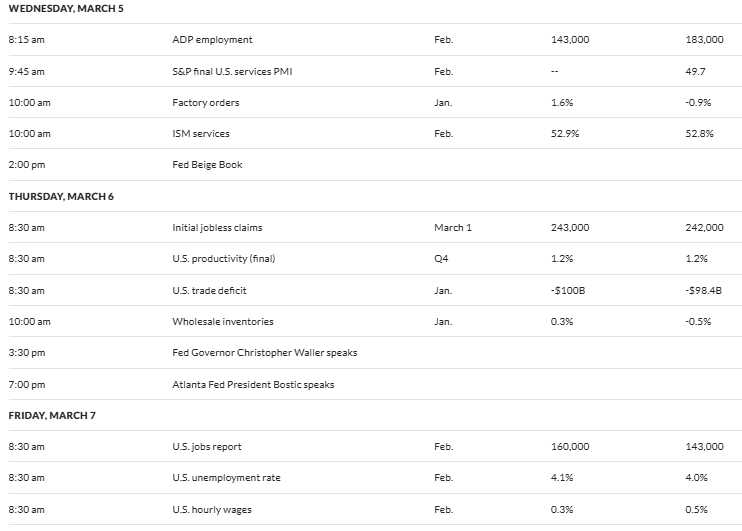
ADP Employment Report
The week kicks off with the ADP National Employment Report on Wednesday. This US economic data is a key gauge of private-sector job growth. After the previous 183,000, economists forecast February’s jobs data slowing down to around 143,000. This reflects a continued cautious hiring environment, as President Trump’s economic policies remain a topic of interest.
A stronger-than-expected report could signal resilience in the labor market, potentially boosting the US dollar and pressuring Bitcoin as investors pivot to traditional assets. Conversely, a weaker print might fuel expectations of Federal Reserve rate cuts, lifting BTC as a risk asset.
“The focus is on jobs data this week, with ADP on Mar 5 expected at 143,000 and non-farm payrolls on Mar 7 forecasted at 160,000. If those hit or beat, the bulls will likely drive a 1-2% gain, fueled by optimism in tech and a belief in a soft landing,” one user commented.
However, the outcome remains uncertain, with historical trends showing mixed reactions in crypto markets to ADP surprises.
Initial Jobless Claims
Thursday’s Initial Jobless Claims report will offer a real-time snapshot of the US labor market’s health. The previous week’s figure increased to 242,000, beating the consensus of 225,000, signaling economic softening.
According to data on MarketWatch, analysts anticipate a slight uptick to around 243,000 for the week ending March 1. Lower claims could reinforce confidence in the economy, potentially reducing Bitcoin’s appeal as a hedge against uncertainty.
Higher claims, however, might stoke fears of a slowdown, driving investors toward BTC as a safe-haven alternative.
US Unemployment Rate
Friday’s US jobs report, including the unemployment rate, is a market marquee event. Forecasts peg job growth at 160,000 for February, up from January’s 143,000, with the unemployment rate forecasted at 4.1%, higher than the previous 4.0%.
Strong job growth could dampen hopes for monetary easing, pressuring Bitcoin as higher interest rates make yield-bearing assets more attractive. A disappointing report, on the other hand, might bolster BTC’s narrative as a hedge against economic weakness.
Jerome Powell Speech
Federal Reserve Chair Jerome Powell’s upcoming speech is also a wildcard. It features US economic data that could influence crypto sentiment this week. His speech could set the tone for monetary policy expectations.
His remarks, scheduled for Friday, will be parsed for clues on rate cuts in 2025, especially after the Fed’s latest interest rate decision. Dovish hints—suggesting more aggressive easing—could propel Bitcoin higher by weakening the dollar and boosting risk appetite. A hawkish stance, emphasizing inflation control, might weigh on BTC as borrowing costs rise.
Notably, Powell recently told the Senate Banking Committee that he is in no rush to cut interest rates, maintaining a cautious economic approach. Nevertheless, it is impossible to ignore the growing concerns among US policymakers about President Trump’s policies.
“Many participants suggested that a variety of factors underlined the need for a careful approach to monetary policy decisions over coming quarters,” the Fed’s previous minutes stated.
Consumer Credit
Friday’s Consumer Credit data will shed light on American borrowing trends by rounding out the week. Following a $40.85 billion increase in December, a sharp rise could signal strong consumer confidence, potentially reducing Bitcoin’s allure as disposable income flows elsewhere.
A slowdown in credit growth might suggest economic caution, nudging investors toward BTC as a store of value amid uncertainty. Nevertheless, data on MarketWatch indicates a modest median forecast of $12 billion.
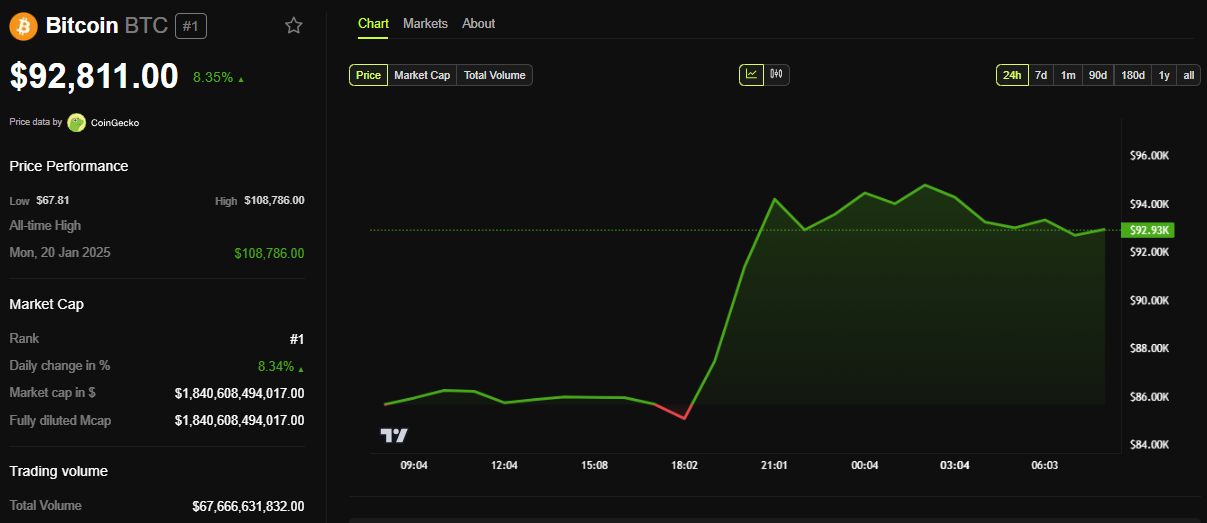
As of this writing, Bitcoin was trading for $92,811, up by over 8% since Monday’s session opened. With these five data points looming, volatility is all but guaranteed.
Meanwhile, traders and investors are waiting expectantly for the crypto summit on Friday at the White House, as President Trump aims to position the US at the forefront of the growing digital asset industry.
“While I anticipated the pro-American crypto asset reserve that focused specifically on American blockchains, I didn’t trade the news. This is the beta trade. Look at the tokens that have not been added yet before the summit on Friday and consider holding some in your portfolio. It is a pretty speculative trade though because while Trump did hint there would be more added, those that aren’t chosen will likely take a reverse hit,” one X user quipped.
Disclaimer
In adherence to the Trust Project guidelines, BeInCrypto is committed to unbiased, transparent reporting. This news article aims to provide accurate, timely information. However, readers are advised to verify facts independently and consult with a professional before making any decisions based on this content. Please note that our Terms and Conditions, Privacy Policy, and Disclaimers have been updated.
Bitcoin
Public Companies are Buying Bitcoin Again After a Brief Pause

Bitcoin is rebounding after tariff chaos, and public companies like Metaplanet are conducting major acquisitions. The firm bought $28.2 million worth of the asset, nearly a $2 million increase from last week.
However, despite this new confidence, Metaplanet’s stock has continued to perform shakily. The crypto market is showing cautious optimism, but that won’t immediately translate into major gains.
Although a few corporate Bitcoin whales briefly paused their big purchases recently, the markets are heating back up again. Metaplanet began buying the dip last week, and Bitcoin has been making steady progress since then.
Today, its CEO, Simon Gerovich, announced a new purchase as BTC rebounds:
“Metaplanet has acquired 330 BTC for ~$28.2 million at ~$85,605 per bitcoin and has achieved BTC Yield of 119.3% YTD 2025. As of 4/21/2025, we hold 4855 $BTC acquired for ~$414.5 million at ~$85,386 per bitcoin,” he claimed.
Trump’s tariff threats caused massive uncertainty and crypto liquidations in the last few weeks. However, since he announced a pause, crypto and industry-related stocks have been rallying.
Whales like Metaplanet and MicroStrategy immediately began buying Bitcoin, and the whole market is rising. The Crypto Fear and Greed Index was recently in Extreme Fear but has since recovered greatly:
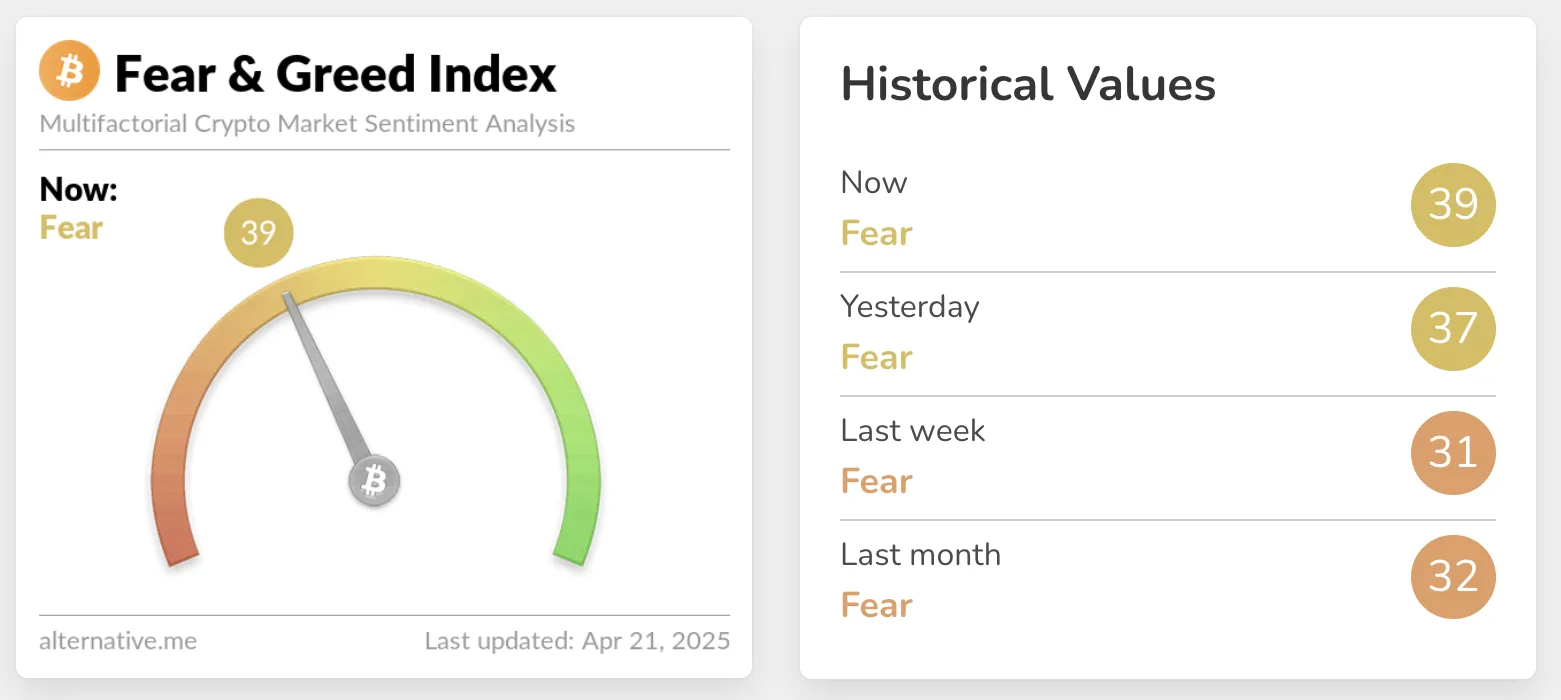
Still, markets are showing cautious optimism, not a full rally. A quick look at some major crypto-related stocks will paint a clearer picture.
MicroStrategy rose over 4% in the last five days and nearly 6% in the last month, but it’s a pillar of confidence in BTC. Metaplanet, a much smaller Bitcoin holder, only fell 1.89% in the last five days but over 20% in the last 30.
In other words, it can be difficult to cleanly connect Bitcoin’s recent successes with major holders like Metaplanet. Compare two prominent US-based crypto miners, Marathon and Riot.
The former recovered from its slump in early April, while the latter only continued to drop. Coinbase, too, has only made brief rallies on a trend of continual decline.
While Bitcoin’s adoption has surged dramatically over the past year, there’s still a lot of uncertainty about tariffs and recession. Metaplanet may be in shaky territory right now, but its confidence in Bitcoin can provide a long-term sense of stability.
Disclaimer
In adherence to the Trust Project guidelines, BeInCrypto is committed to unbiased, transparent reporting. This news article aims to provide accurate, timely information. However, readers are advised to verify facts independently and consult with a professional before making any decisions based on this content. Please note that our Terms and Conditions, Privacy Policy, and Disclaimers have been updated.
Bitcoin
Dollar Dips While Bitcoin Hits New Heights

The US Dollar Index (DXY) has dropped to a three-year low amid reports that President Donald Trump is considering removing Federal Reserve Chairman Jerome Powell.
Meanwhile, the development positively affected Bitcoin’s (BTC) price, pushing it to its highest level since President Trump’s Liberation Day.
Trump’s Push Against Powell Adds Pressure on the Dollar
According to the latest data, DXY has plunged below 99. At press time, it stood at 98.2, representing the lowest value since March 2022.

Economist Peter Schiff highlighted the severity of the situation in the latest post on X (formerly Twitter).
“Gold is up over $50, hitting a record high of $3,380. The euro is above $1.15. The dollar has also fallen below 141 Japanese yen and .81 Swiss francs (a new 14-year low, just 3% above a record low). The dollar Index is below 98.5, a new three-year low. This is getting serious,” Schiff posted.
The dollar’s steep fall comes amid the latest comments made by National Economic Council Director Kevin Hassett on Friday, April 18. Hassett revealed that Trump and his team are actively exploring the possibility of ousting Powell.
His statement was in response to a reporter’s question about whether removing Powell was an option.
“The president and his team will continue to study that matter,” Hassett replied.
In addition, he called out the Federal Reserve for politically motivated actions under Powell’s leadership. Specifically, Hassett criticized the Fed for raising interest rates shortly after Trump’s election and cutting them ahead of the election, moves he claims favored the Democratic Party.
Notably, the growing contempt towards Powell is a response to the Fed’s stance on interest rates. BeInCrypto reported earlier that the Fed will likely not cut rates in May amid rising inflation and President Trump’s tariff pause.
Recently, Trump also blamed the Fed Chair for being slow to act on interest rate cuts. In a post on social media, Trump compared Powell’s actions unfavorably to the European Central Bank (ECB), which is set to implement its seventh interest rate cut.
Trump argued that Powell, whom he described as “always too late and wrong,” should have taken similar measures long ago to address economic conditions.
“Powell’s termination cannot come fast enough!” the President wrote.
The Fed Chair’s potential removal raises serious questions about the Federal Reserve’s independence and its implications for global markets. Powell, whose term as chair extends to May 2026, has previously stated that legal protections prevent his removal and that he intends to serve out his term.
Will Dollar Weakness Drive Bitcoin to New Heights?
Nonetheless, it’s worth noting that if Powell is removed and President Trump successfully persuades the Federal Reserve to cut interest rates, it could likely lead to a crypto market rally. Generally, when the Fed lowers interest rates, the US dollar tends to weaken.
Therefore, investors prefer cryptocurrencies, especially Bitcoin, which is often seen as a hedge against inflation and the weakening of fiat currencies. The inverse relation between the DXY and BTC further solidifies the case for a rally if the dollar depreciates.
In fact, the latest decline in the dollar index has coincided with a notable increase in Bitcoin’s price. The largest cryptocurrency surged to over $87,000 for the first time since April 2.
“USD weakness is driving the rally in crypto,” Sean McNulty, Derivatives Trading Lead at FalconX, told Bloomberg.
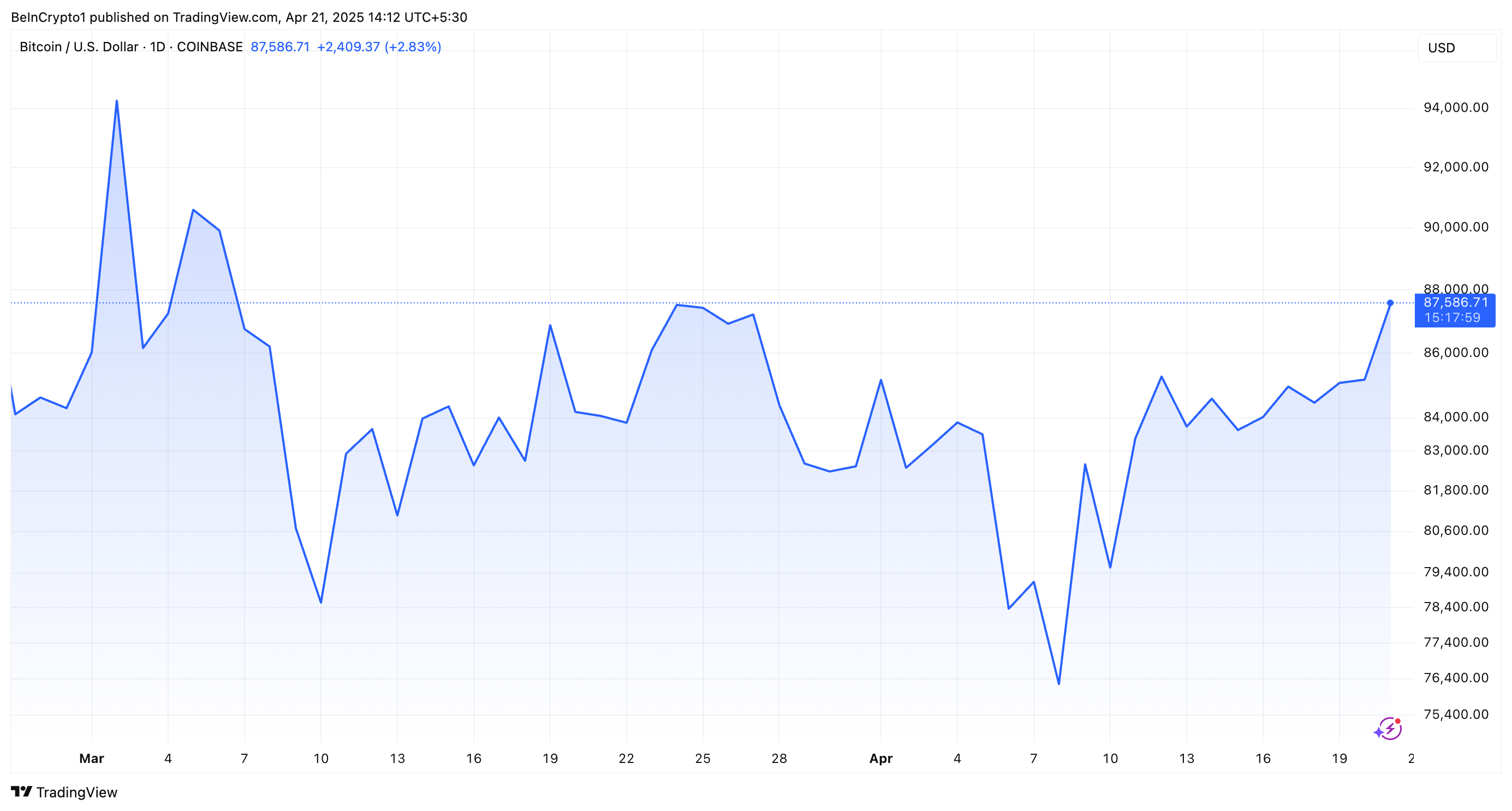
At the time of writing, BTC was trading at $87,586. BeInCrypto data showed that this represented an appreciation of 3.5% over the past day. As markets celebrate these gains, the focus remains on Trump’s next moves and their broader economic consequences.
Disclaimer
In adherence to the Trust Project guidelines, BeInCrypto is committed to unbiased, transparent reporting. This news article aims to provide accurate, timely information. However, readers are advised to verify facts independently and consult with a professional before making any decisions based on this content. Please note that our Terms and Conditions, Privacy Policy, and Disclaimers have been updated.
Bitcoin
Solana, Bitcoin in Texas, and Initia

Several top crypto news stories are in the lineup this week in crypto, spanning various ecosystems with the potential to drive volatility.
This week, traders looking to capitalize on event-specific volatility should monitor the following developments.
This week, the Solana Community Conference, or Breakpoint, is among the top crypto news stories. It kicks off on April 25 and is Solana’s flagship gathering of developers, investors, and innovators.
Historically, Solana Breakpoint is a stage for major announcements, such as new project launches, partnerships, or technological advancements. In recent years, key announcements in similar gatherings have included the Solana Seeker phone or the Firedancer validator client.
According to Solscan data, Solana’s ecosystem boasts nearly 4 million active wallets. Meanwhile, DefiLlama data shows up to $7.37 billion in total value locked (TVL). With these numbers, the Solana community conference could drive positive sentiment for SOL, which was trading at $141.05 at press time.
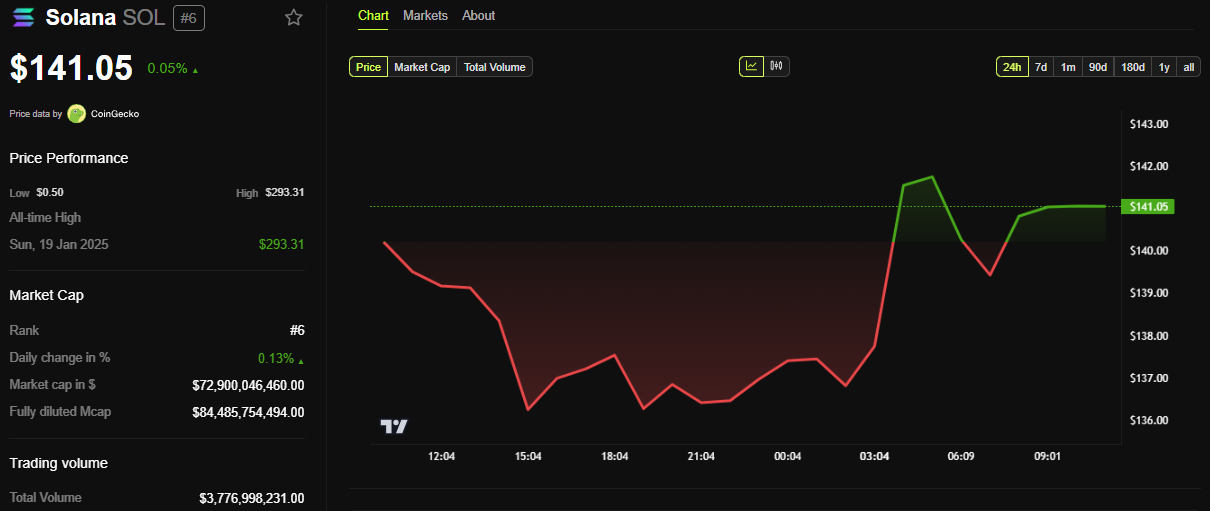
Traders should brace for potential price volatility, as positive news could spark short-term spikes. In the same way, any underwhelming news or network concerns, like past outages, might temper enthusiasm.
Texas Bitcoin Reserve Hearing
Another top crypto news story this week concerns a strategic crypto reserve. On April 23, Texas will hold a strategic Bitcoin reserve hearing, marking a significant event given the state’s pro-crypto stance.
The bill, introduced four months ago, passed the committee with a 9-0 vote and received senate approval with 80% support. Similarly, Dan Patrick, Lieutenant Governor for the State of Texas, listed Bitcoin Reserve as a top priority for 2025.
“My statement announcing the first round of top 40 priority Bills for the 2025 legislative session,” he shared on X (Twitter) in January.
Against these backdrops, the Wednesday hearing could clarify Texas’s approach to institutional Bitcoin adoption. This could set a precedent for other states or federal policy.
A favorable outcome might bolster Bitcoin’s legitimacy, driving demand from institutional investors and positively influencing the BTC price.

Initia’s Mainnet and INIT Token Launch
Also in the headlines, this week in crypto, Initia’s mainnet launch and its token, INIT, debut on Thursday, April 24. This comes after the network revealed a 50 million token airdrop three weeks ago.
The Thursday event will mark a key milestone for the layer-1 blockchain, which is focused on interoperability and user experience. The launch could attract attention from decentralized finance (DeFi) and cross-chain enthusiasts, as Initia aims to simplify dApp interactions.
For traders, INIT’s initial price action will be critical, as new token launches often experience high volatility due to speculative trading.
“Initia INIT Binance Spot Listing Date Announced! Listing on: 24th April 2025. Mainnet will also officially launch on the same day. Airdrop claim date and exact time are yet to be announced,” the network stated recently.
Investors should evaluate Initia’s partnerships and developer adoption, as its success hinges on ecosystem growth.
Injective’s Lyora Mainnet Upgrade
Injective’s Lyora mainnet upgrade, scheduled for Tuesday, April 22, aims to enhance network performance and transaction speed. It would strengthen its position as a DeFi-focused layer-1 chain.
“The Injective Lyora Mainnet is nearly here! Vote today to dramatically enhance Injective infrastructure, performance, and transaction speeds. The official launch is on April 22,” Injective said.
This upgrade could improve user experience and attract developers to Injective’s ecosystem, particularly for derivatives and trading platforms.
Traders should watch INJ’s price for short-term momentum, as successful upgrades often drive positive sentiment.
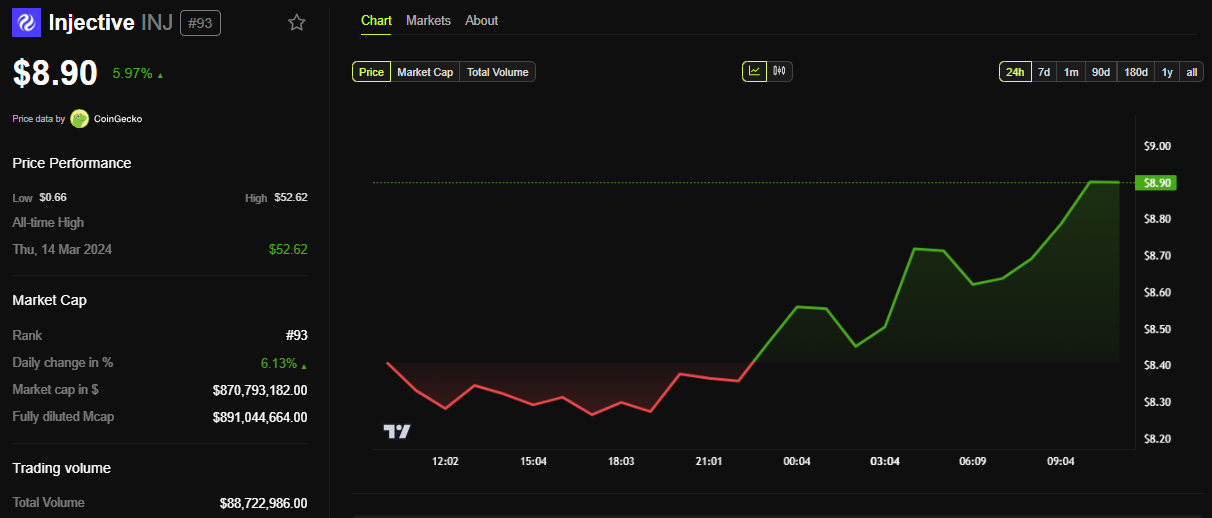
At the same time, investors should consider Injective’s growing TVL (total value locked) and partnerships, like its collaboration with Sonic for AI agent platforms, as indicators of long-term potential.
Disclaimer
In adherence to the Trust Project guidelines, BeInCrypto is committed to unbiased, transparent reporting. This news article aims to provide accurate, timely information. However, readers are advised to verify facts independently and consult with a professional before making any decisions based on this content. Please note that our Terms and Conditions, Privacy Policy, and Disclaimers have been updated.




















